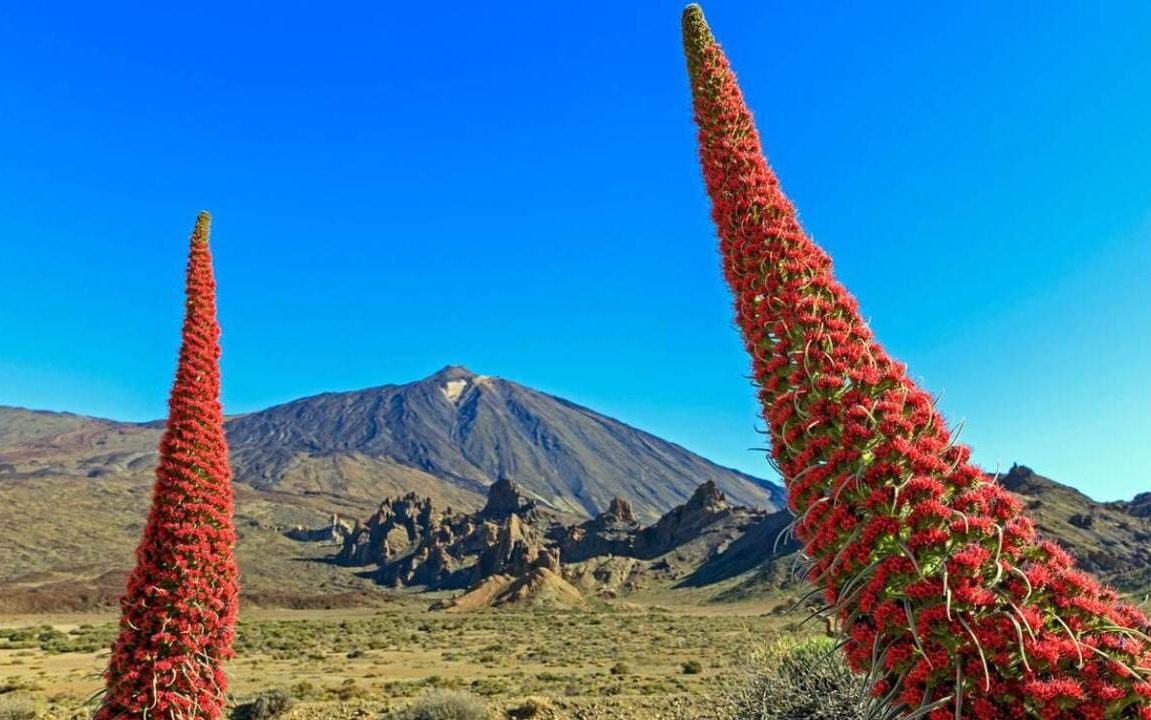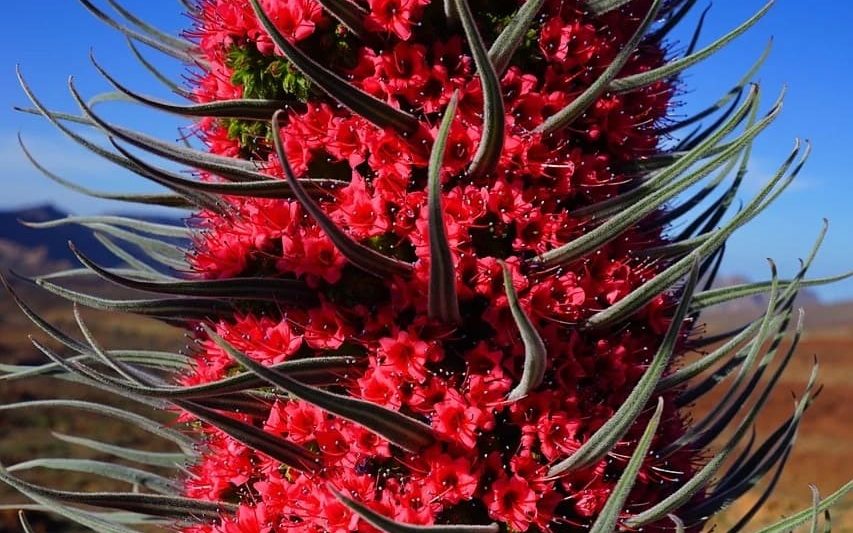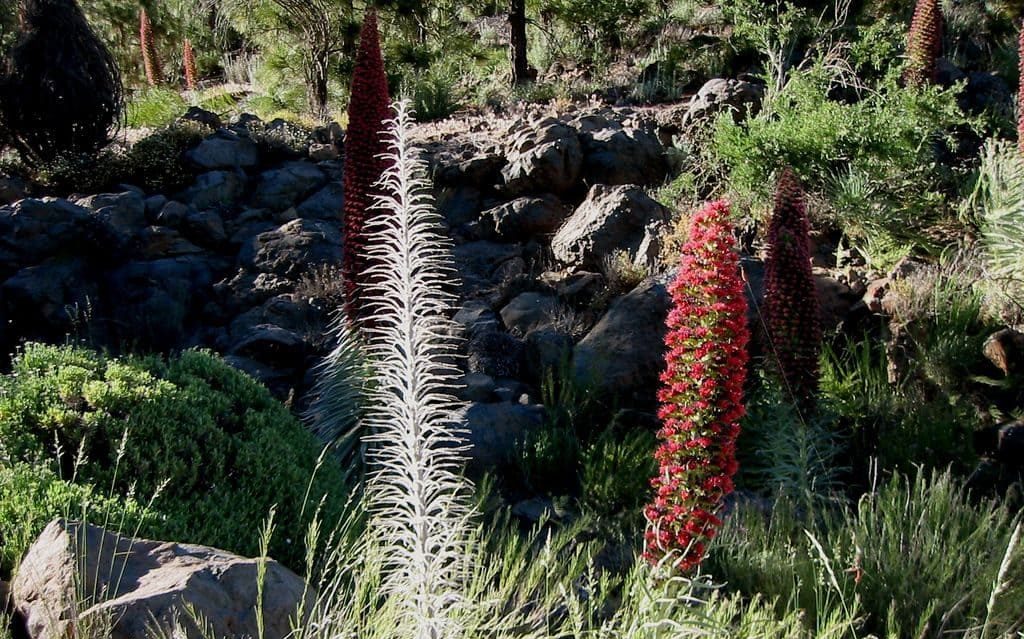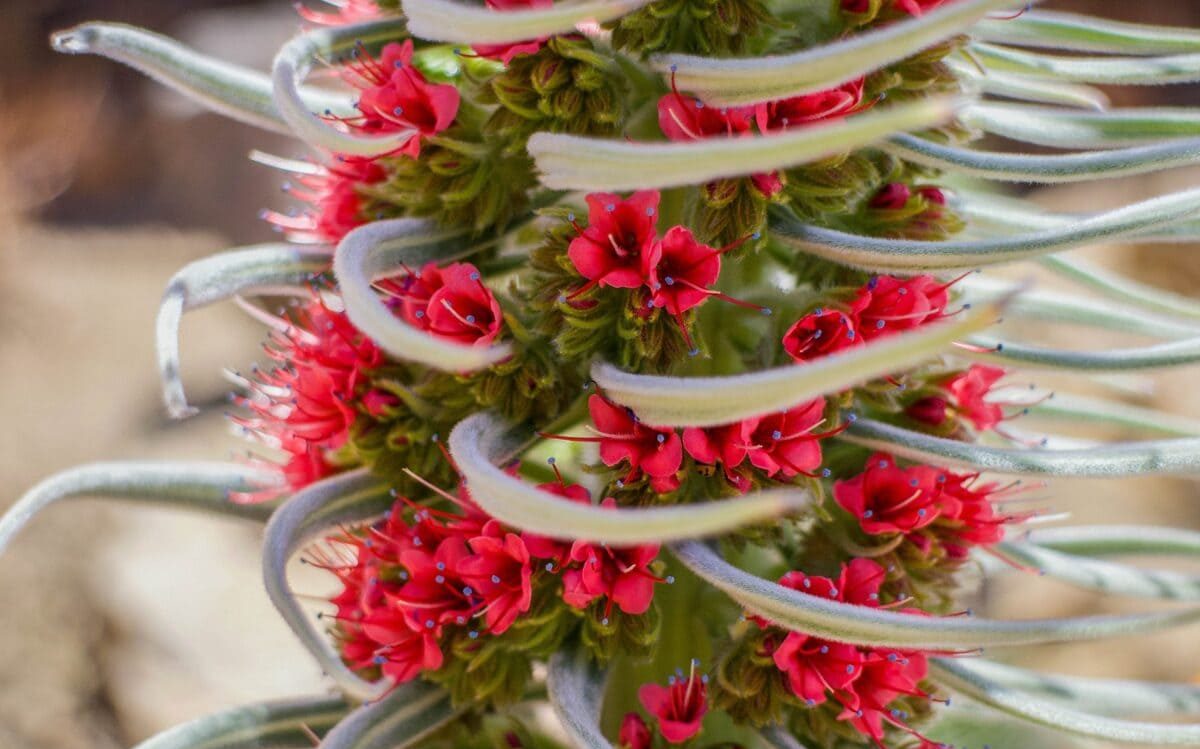Before the beginning of summer, one of the most amazing natural spectacles of the archipelago begins, the flowering of the tajinaste, a true explosion of beauty that floods the Canary landscape with color and leaves no one indifferent to those who contemplate it.

This endemic plant of the Islands, also known as "the pride of Tenerife" or "blood of Teide", can rise up to three meters high. The tajinaste is characteristic of the National Park of Las Cañadas del Teide, being the Cañadas themselves, the viewpoint of La Fortaleza and the Llano de Ucanca the best places to delight the eye with its presence. In addition, it also appears in other places of the island such as Vilaflor, Arico and Arafo. Although the red tajinaste is the best known, there are white and blue tajinastes.
Red, the most common variety
In the Canary Islands there is a great variety of tajinastes that are part of the genus Echium. The red tajinaste is a shrub without branches with a shape similar to a spear, which can reach three meters in height. This species is only found in the Teide National Park, hence it is known as "Teide red tajinaste".
The name of this endemic species comes from the Guanche language, specifically from the word "tainast", which means "needle".

The red tajinaste flowers in spring, when the contrast of colors between the dark tones of the lava and the red of the flowering tajinaste occurs. It is also a biennial plant, which means that it takes two years to complete its biological cycle.
During the first year of its biological cycle, the tajinaste develops a dense rosette formed by leaves that are lanceolate, lance-shaped, persistent and about 30 centimeters long by 2 centimeters wide. In the second year, the flowers appear, which is an explosion of red color. Once its cycle is over, the tajinaste dies. First it loses its flowers and leaves its skeleton in sight, to later end up collapsing.

This shrub grows individually, with large spaces between specimens. However, it is also possible for them to establish themselves in extensive group formations, as if it were a forest, a phenomenon known as tajinastal.
In addition, the Government of the Canary Islands had to prohibit grazing in the Teide National Park because the red tajinaste was on the verge of extinction. Today, this species has fully recovered and is out of danger.
The delicious tajinaste honey
It should be noted that the tajinaste is the main plant that bees on the island of Tenerife use to produce their honey. This is due to the great richness in pollen and nectar that the bush presents, attracting these insects.

Tajinaste honey is considered one of the best in the world due to its organoleptic characteristics. This honey is characterized by a very light color, almost transparent, with just a hint of amber. Such characteristics make it worthy of having its own Denomination of Origin.
Paula Vera
Photos: sembrar100.com, hola.com, webtenerife.com



